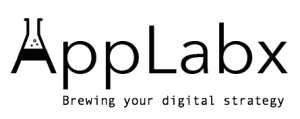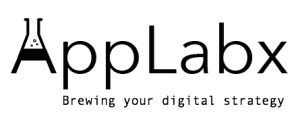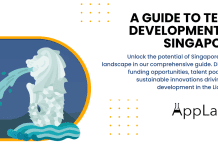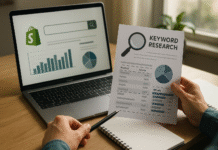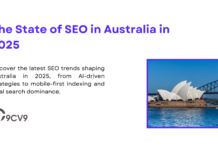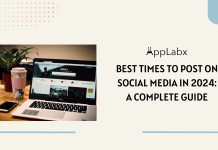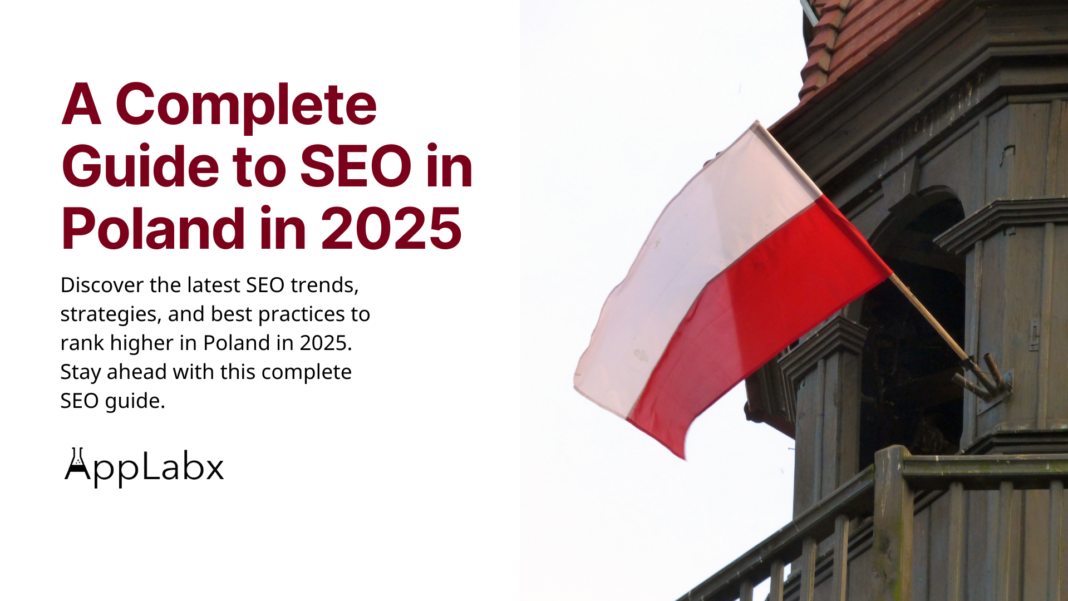Key Takeaways
- SEO in Poland is evolving, with AI-driven search, voice search, and mobile-first indexing shaping rankings in 2025.
- Quality content, technical SEO, and local optimization are key to improving visibility in the competitive Polish market.
- Data-driven SEO strategies and continuous adaptation to Google updates are essential for long-term success in Poland.
Search Engine Optimization (SEO) is an ever-evolving digital marketing strategy that plays a crucial role in helping businesses increase their online visibility, attract organic traffic, and stay ahead of the competition.
In Poland, the SEO landscape has undergone significant changes in recent years, with 2025 marking a new era shaped by technological advancements, evolving user behavior, and Google’s continuous algorithm updates.
Whether you are a local business owner, a digital marketer, or an international company looking to enter the Polish market, understanding SEO in Poland in 2025 is essential for success.
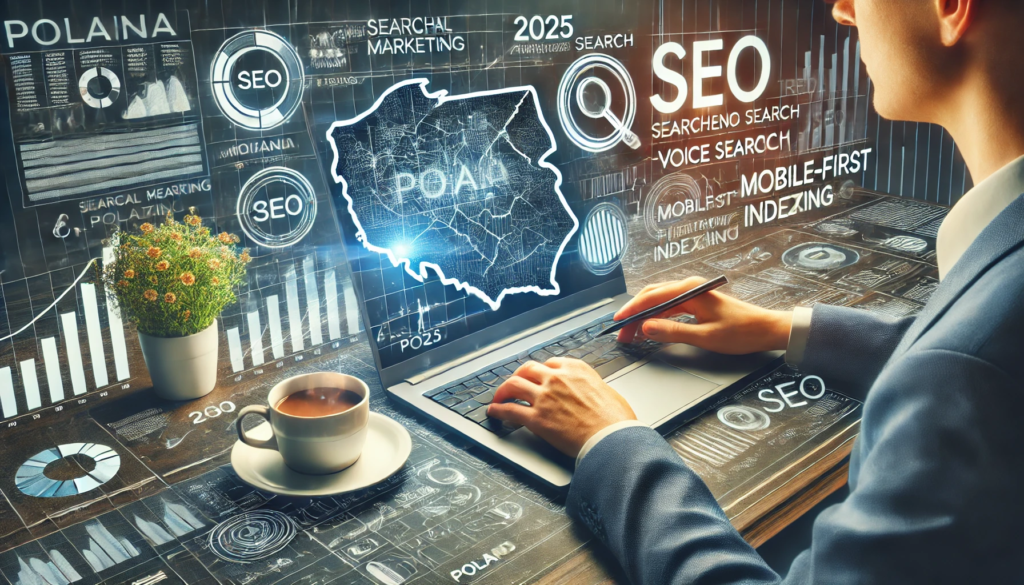
Why SEO Matters More Than Ever in Poland
Poland has one of the fastest-growing digital economies in Europe, with millions of users relying on search engines to find products, services, and information. According to recent reports, internet penetration in Poland continues to rise, with more people using smartphones and mobile devices to access the web. As a result, businesses that fail to optimize their websites for search engines risk losing potential customers to competitors who have a strong online presence.
Moreover, the competition in Poland’s digital market is intensifying. Local businesses are increasingly investing in SEO to improve their rankings on Google, the dominant search engine in Poland. At the same time, international companies are targeting Polish consumers, making it even more critical for businesses to develop effective SEO strategies tailored to local search trends and user preferences.
The Evolution of SEO in Poland
SEO in Poland has changed dramatically over the years, driven by Google’s algorithm updates, advancements in artificial intelligence (AI), and shifts in user behavior. In the past, SEO was primarily about keyword stuffing, backlink building, and manipulating rankings through technical tricks. However, modern SEO is centered around user experience, high-quality content, and search intent.
In 2025, search engines are more sophisticated than ever, using AI-driven algorithms to understand user queries, assess content quality, and prioritize websites that provide valuable, relevant, and engaging information. This means that businesses operating in Poland must focus on creating content that answers users’ questions, optimizing for local search, and ensuring their websites meet Google’s Core Web Vitals requirements.
Key Challenges and Opportunities in the Polish SEO Market
Polish businesses face unique challenges when it comes to SEO. The Polish language itself presents complexities in keyword optimization, as certain words and phrases have different meanings depending on context. Additionally, local search behavior differs from other European markets, making it essential to conduct in-depth keyword research tailored specifically for the Polish audience.
On the other hand, there are significant opportunities for businesses that invest in SEO in Poland. Many industries are still in the early stages of digital transformation, meaning that well-executed SEO strategies can yield substantial results. Furthermore, Google’s emphasis on local SEO provides an advantage for businesses that optimize their websites for location-based searches, making it easier to reach potential customers in specific cities or regions within Poland.
What This Guide Covers
This comprehensive guide to SEO in Poland in 2025 will explore everything you need to know about ranking higher on Google, driving organic traffic, and growing your business online. We will cover:
- The latest SEO trends shaping the Polish digital market.
- Effective keyword research strategies for Polish websites.
- On-page and off-page SEO best practices tailored to Polish users.
- Technical SEO considerations to improve website performance.
- The impact of AI and machine learning on SEO in Poland.
- Local SEO strategies for businesses targeting Polish consumers.
- Common SEO mistakes to avoid and best practices to follow.
- Predictions for the future of SEO in Poland beyond 2025.
Whether you are new to SEO or looking to refine your existing strategies, this guide will provide actionable insights and expert recommendations to help you navigate the competitive Polish market. By the end of this guide, you will have a clear understanding of how to optimize your website, improve search rankings, and drive sustainable growth in Poland’s digital ecosystem.
Let’s dive in and explore the future of SEO in Poland in 2025.
But, before we venture further, we like to share who we are and what we do.
About AppLabx
From developing a solid marketing plan to creating compelling content, optimizing for search engines, leveraging social media, and utilizing paid advertising, AppLabx offers a comprehensive suite of digital marketing services designed to drive growth and profitability for your business.
AppLabx is well known for helping companies and startups use SEO to drive web traffic to their websites and web apps.
At AppLabx, we understand that no two businesses are alike. That’s why we take a personalized approach to every project, working closely with our clients to understand their unique needs and goals, and developing customized strategies to help them achieve success.
If you need a digital consultation, then send in an inquiry here.
AppLabx SEO Agency: The Top SEO Agency in Poland for 2025
In the fast-paced digital world, staying ahead of the competition is crucial. At AppLabx, we are proud to be recognized as one of the top SEO agencies in Poland for 2025.
Our team of experienced SEO professionals understands the unique needs of Polish businesses and the evolving landscape of search engine algorithms. Whether you’re a local business looking to improve your online presence or an international brand aiming to expand in Poland, AppLabx has the expertise and strategies to help you succeed.
Why Choose AppLabx for Your SEO Needs in Poland?
Proven Track Record of Success
With years of experience in the Polish market, we have helped countless businesses achieve higher rankings, drive organic traffic, and increase sales. Our results speak for themselves, and we are committed to delivering continuous growth and value to every client we work with.
Tailored SEO Strategies for Polish Businesses
At AppLabx, we know that there is no one-size-fits-all approach to SEO. Our team customizes each strategy based on your unique business goals, industry, and target audience. Whether it’s local SEO, technical optimization, or content marketing, we ensure every aspect of your SEO campaign is designed to give you the best results.
Comprehensive SEO Services
Our services cover every aspect of SEO, from on-page optimization to off-page link-building, and technical SEO. We specialize in the following:
- Keyword Research: Unlock the power of high-converting keywords tailored to your audience in Poland.
- On-Page SEO: Optimize your website for search engines and users alike, improving rankings and engagement.
- Local SEO: Dominate the local search results in Poland with optimized Google My Business listings, maps, and localized content.
- Link Building: Enhance your website’s authority with high-quality backlinks from trusted sources.
- Technical SEO: Ensure your site’s performance and user experience meet Google’s rigorous standards.
Data-Driven Approach
We rely on data to inform our SEO strategies. With the help of the latest tools and analytics, we continuously monitor, analyze, and adjust our tactics to ensure optimal results. This data-driven approach allows us to track performance and provide actionable insights to improve your rankings further.
Ethical SEO Practices
At AppLabx, we are committed to using white-hat SEO strategies that adhere to Google’s guidelines. We avoid shortcuts that could potentially harm your website’s reputation and focus on sustainable techniques that yield long-term success.
How AppLabx SEO Agency Can Benefit Your Business in Poland in 2025
- Increase Organic Traffic: By ranking higher in Google’s search results, you’ll attract more visitors to your website and increase your online visibility.
- Improve Brand Authority: Consistently high rankings improve your website’s authority, establishing your business as a trusted industry leader.
- Boost Conversion Rates: Higher visibility and optimized user experiences lead to improved conversion rates, turning visitors into loyal customers.
- Stay Ahead of Competitors: With AppLabx’s expert SEO services, you’ll stay ahead of the curve in the ever-changing Polish SEO landscape, beating your competitors to the top spot.
The AppLabx Advantage: SEO Excellence in Poland
- Experienced Team: Our SEO specialists are seasoned experts who are up-to-date with the latest SEO trends and Google algorithm changes.
- Results-Oriented: We focus on measurable results, ensuring that your investment in SEO delivers the maximum return.
- Client-Centric Approach: At AppLabx, your business goals are our top priority. We work closely with you to achieve your objectives and exceed your expectations.
Get Started with AppLabx SEO Agency Today
SEO in Poland is more competitive than ever. If you want to succeed in 2025 and beyond, partner with AppLabx, the top SEO agency in Poland. Contact us today for a free consultation and let’s start building an SEO strategy that drives real, measurable results for your business.
AppLabx—Your trusted SEO partner in Poland for long-term success.
A Complete Guide to SEO in Poland in 2025
- The State of SEO in Poland: Trends and Insights for 2025
- SEO Strategies for Polish Websites: What Works in 2025
- Keyword Research for the Polish Market
- On-Page SEO for Polish Websites
- Off-Page SEO: Building Authority and Links in Poland
- Technical SEO: Ensuring a Solid Foundation for Polish Websites
- SEO for E-commerce in Poland
- Content Marketing and SEO Synergy in Poland
- Measuring SEO Success in Poland: Key Metrics and Tools
- Common SEO Mistakes to Avoid in Poland
- Future of SEO in Poland: What to Expect in the Next Few Years
1. The State of SEO in Poland: Trends and Insights for 2025
The SEO landscape in Poland continues to evolve as search engines refine their algorithms, user behavior shifts, and digital marketing strategies become more sophisticated. Businesses operating in Poland must stay updated with the latest SEO trends and best practices to maintain their search rankings and attract organic traffic. In 2025, several key factors are shaping the state of SEO in Poland, including local search dominance, mobile-first indexing, AI-driven content strategies, and the increasing importance of user experience.
Below, we explore the most significant SEO trends in Poland for 2025 and how businesses can leverage them for success.
1. Google’s Dominance in the Polish Search Market
While there are alternative search engines, Google remains the most widely used search engine in Poland. Understanding its algorithm updates and ranking factors is crucial for businesses looking to succeed in SEO.
Key Insights:
- Google holds over 95% market share in Poland, making it the primary focus for SEO efforts.
- Bing and Yahoo have a minimal presence, while alternative search engines like DuckDuckGo are used by a niche audience concerned with privacy.
- Local search is increasingly competitive, with businesses optimizing their Google My Business (GMB) profiles to rank higher in location-based searches.
- Google’s Search Generative Experience (SGE), powered by AI, is changing how search results are displayed, emphasizing rich and conversational search results.
Example:
A local bakery in Warsaw optimized its GMB profile by adding high-quality images, updating business hours, and actively responding to customer reviews. As a result, it saw a 40% increase in local search visibility and a significant boost in foot traffic.
2. AI and Machine Learning Reshaping SEO Strategies
Artificial intelligence (AI) is transforming the way businesses approach SEO in Poland, influencing everything from content creation to keyword optimization.
Key Trends:
- Google’s AI-powered algorithms like RankBrain and BERT prioritize user intent and content relevance over keyword density.
- Businesses must focus on natural language processing (NLP) and conversational queries to optimize for AI-driven search results.
- The rise of AI-generated content tools like ChatGPT and Google’s Gemini is streamlining content production, but businesses must ensure quality and originality to avoid penalties.
- E-A-T (Expertise, Authoritativeness, and Trustworthiness) remains a critical ranking factor, especially for industries like finance, healthcare, and legal services.
Example:
A Polish tech blog started using AI tools for keyword research and content structuring but ensured human editing for quality control. As a result, its organic traffic grew by 30% in six months due to improved content relevance and engagement.
3. The Rise of Voice Search and Conversational Queries
With more Polish users relying on smart assistants like Google Assistant and Siri, voice search is becoming a significant factor in SEO.
Key Trends:
- Over 40% of Polish users now use voice search regularly, particularly on mobile devices.
- Voice search queries tend to be longer and more conversational, requiring businesses to optimize for natural language and question-based keywords (e.g., “Where is the best pizza place in Kraków?”).
- Local businesses benefit the most from voice search optimization since users often search for nearby services.
- Featured snippets (position zero results) are a primary source for voice search responses, making structured content and FAQ sections essential.
Example:
A travel agency in Poland optimized its website for voice search by including FAQ-style blog posts with natural language questions. It saw an increase in voice search-driven traffic, particularly for “best travel destinations in Poland 2025.”
4. Mobile-First Indexing and Core Web Vitals Prioritization
Google’s focus on mobile-first indexing means that websites optimized for mobile devices perform better in search rankings.
Key Trends:
- Over 80% of internet users in Poland browse on mobile devices, making mobile SEO essential.
- Google prioritizes websites that meet Core Web Vitals metrics, including:
- Largest Contentful Paint (LCP): Measures page load speed.
- First Input Delay (FID): Measures interactivity.
- Cumulative Layout Shift (CLS): Measures visual stability.
- Websites that fail to meet these criteria experience higher bounce rates and lower rankings.
Example:
An online fashion retailer in Poland improved its mobile page speed by compressing images, implementing lazy loading, and reducing unnecessary JavaScript. This led to a 20% decrease in bounce rate and a 15% increase in mobile conversions.
5. The Growing Importance of Local SEO in Poland
Local SEO is becoming more competitive as businesses aim to capture audiences within specific Polish cities and regions.
Key Strategies for Local SEO Success:
- Optimizing Google My Business (GMB): Ensuring accurate business details, adding engaging photos, and actively responding to reviews.
- Local keyword optimization: Using Polish-specific keywords, such as “najlepsza restauracja w Warszawie” (best restaurant in Warsaw).
- Building local citations: Listing businesses in Polish directories like Panorama Firm and Zumi.
- Encouraging customer reviews: Positive Google reviews improve local rankings.
Example:
A dental clinic in Gdańsk focused on collecting positive Google reviews and optimizing its website for “best dentist in Gdańsk.” This resulted in a 35% increase in appointment bookings through organic search.
6. Content Quality and Topical Authority Gaining More Importance
High-quality, informative, and authoritative content is key to ranking well in 2025. Google rewards websites that provide comprehensive, expert-driven content on a particular subject.
Best Practices for Content Optimization:
- Creating long-form, in-depth articles that cover topics extensively.
- Updating outdated content to maintain relevance.
- Focusing on topical authority rather than just individual keywords.
- Including multimedia elements such as images, videos, and infographics to enhance user engagement.
Example:
A Polish finance blog started publishing detailed, research-backed articles on investment trends. As a result, it became a go-to resource and gained high-authority backlinks from major Polish financial websites.
7. The Impact of Zero-Click Searches on SEO
More searches are being answered directly on Google through featured snippets, knowledge panels, and “People Also Ask” sections, reducing the need for users to click on websites.
How to Adapt:
- Optimize content for featured snippets by providing concise, well-structured answers.
- Utilize schema markup to help Google understand and display content in search results.
- Focus on building brand authority to drive direct traffic outside of search engines.
Example:
A Polish legal advice website structured its content to target featured snippets. Within six months, it ranked for dozens of zero-click search queries, increasing brand visibility without relying solely on traditional organic traffic.
Conclusion
SEO in Poland in 2025 is more dynamic than ever, with trends like AI-driven optimization, mobile-first indexing, local SEO, and voice search shaping the digital landscape. Businesses must adapt by focusing on high-quality content, technical SEO, and user experience to stay competitive. By leveraging these trends, companies can improve their search rankings, drive organic traffic, and establish a strong online presence in Poland’s evolving digital ecosystem.
Staying ahead in SEO requires continuous learning, adaptation, and strategic implementation. As we move further into 2025, businesses that prioritize SEO will gain a significant edge in Poland’s competitive online market.
2. SEO Strategies for Polish Websites: What Works in 2025
SEO in Poland continues to evolve, and businesses must adopt advanced strategies to maintain strong search rankings. With Google’s ever-changing algorithms, increasing competition, and the shift toward AI-driven search, Polish websites need a combination of technical SEO, content optimization, and user experience improvements to succeed.
In this section, we will explore the most effective SEO strategies for Polish websites in 2025, covering key aspects such as content marketing, local SEO, mobile optimization, and link-building techniques.
1. High-Quality, User-Focused Content
Google’s ranking algorithms prioritize content that is relevant, valuable, and authoritative. Websites that focus on high-quality, well-researched content perform better in search results.
Best Practices for Content Optimization:
- Long-form, in-depth content:
- Articles should be 2,000+ words where necessary, covering a topic comprehensively.
- Example: A Polish tech website that publishes 3,000-word guides on best smartphones in Poland gains better rankings and user engagement.
- Topic Clusters and Topical Authority:
- Instead of targeting individual keywords, focus on building pillar content with multiple supporting articles.
- Example: A Warsaw-based finance blog created a pillar page on personal finance in Poland with sub-pages on loans, investments, and savings. This helped establish topical authority, improving rankings across multiple keywords.
- AI-Assisted Content Creation with Human Oversight:
- AI tools like ChatGPT and Google Gemini can help generate outlines and research topics, but human editing ensures quality and originality.
- Google’s Helpful Content Update favors expert-written, well-structured, and trustworthy content.
- Multimedia Content for Engagement:
- Include videos, images, infographics, and interactive tools to improve user experience and dwell time.
- Example: A Polish travel website that integrated interactive maps of top tourist spots saw a 15% increase in session duration.
2. Local SEO: Dominating the Polish Market
Local SEO remains crucial for Polish businesses, especially for brick-and-mortar stores, service providers, and e-commerce websites targeting regional customers.
Essential Local SEO Tactics:
- Google My Business (GMB) Optimization:
- Complete and update your GMB profile with accurate business information.
- Add high-quality images, operating hours, and services.
- Respond to reviews to improve credibility and engagement.
- Example: A Kraków-based dental clinic that optimized its GMB profile saw a 30% increase in appointment bookings.
- Local Keyword Targeting:
- Use geo-specific keywords like “najlepsza restauracja w Warszawie” (best restaurant in Warsaw).
- Optimize for “near me” searches, as they continue to grow in Poland.
- Local Citations & Business Directories:
- Get listed on Polish directories like Panorama Firm, Zumi, and BiznesFinder to improve local authority.
- Ensure NAP (Name, Address, Phone) consistency across all listings.
- Encouraging Customer Reviews:
- Actively request satisfied customers to leave Google reviews.
- Respond professionally to negative reviews to maintain reputation.
3. Mobile-First SEO & Core Web Vitals Compliance
With over 80% of Polish internet users browsing on mobile, Google’s mobile-first indexing means websites must be optimized for speed, responsiveness, and usability.
Key Mobile Optimization Strategies:
- Fast Page Load Speeds:
- Optimize images using WebP format for reduced file size.
- Implement lazy loading for non-critical assets.
- Use CDNs (Content Delivery Networks) to serve content faster.
- Example: A Polish fashion e-commerce site that optimized images reduced load times by 35%, leading to a 12% increase in mobile conversions.
- Mobile-Friendly UI/UX:
- Ensure a responsive design that adapts to different screen sizes.
- Avoid intrusive pop-ups that disrupt mobile browsing.
- Core Web Vitals Optimization:
- Improve Largest Contentful Paint (LCP) by reducing server response times.
- Optimize Cumulative Layout Shift (CLS) to prevent layout shifts.
4. Advanced Keyword Research & Search Intent Optimization
Keyword research in Poland must go beyond basic keyword volume metrics to focus on user intent and long-tail phrases.
Effective Keyword Research Approaches:
- Use Polish-Specific Keyword Research Tools:
- Ahrefs, Semrush, and Ubersuggest provide localized keyword insights for Poland.
- Google’s People Also Ask feature helps uncover user-driven queries.
- Focus on Search Intent:
- Optimize for informational, navigational, transactional, and commercial keywords.
- Example: A Polish online electronics store optimized its product pages for “kupić laptop gamingowy online” (buy gaming laptop online), increasing transactional keyword traffic by 20%.
- Leverage AI for Keyword Clustering:
- Group keywords by search intent to create more structured content strategies.
5. Link-Building Strategies for Polish Websites
Backlinks remain a major ranking factor, but quality over quantity is key in 2025.
Best Practices for Link Building in Poland:
- Guest Posting on High-Authority Polish Websites:
- Example: A Polish SaaS startup published guest posts on Bankier.pl, gaining high-quality backlinks and referral traffic.
- Digital PR and Media Mentions:
- Engage in industry news features, podcasts, and interviews to earn editorial backlinks.
- Local Directories and Industry-Specific Listings:
- List businesses in niche Polish directories to improve local relevance.
- Broken Link Building:
- Find dead links on Polish industry sites and offer your content as a replacement.
6. Structured Data & Schema Markup
Implementing structured data helps Google understand your website better and improves rich snippets in search results.
Essential Schema Markup Types for Polish Websites:
- Local Business Schema: Helps Polish businesses appear in local searches with business details.
- FAQ Schema: Optimizes for “People Also Ask” results.
- Product Schema: Enhances e-commerce listings with price, availability, and ratings.
Example: A Polish hotel chain that implemented schema markup saw a 15% increase in organic CTR due to rich results displaying hotel ratings and availability.
7. AI and Automation in Polish SEO
AI-powered SEO tools are becoming a game-changer for content generation, keyword research, and data analysis.
How AI is Transforming SEO in Poland:
- Automated Content Optimization: AI suggests title tags, meta descriptions, and content structure.
- Predictive SEO Analysis: AI tools forecast ranking opportunities based on historical data.
- Chatbots for Engagement: Polish e-commerce sites use AI chatbots to enhance user experience and dwell time.
Example: A Polish real estate platform used AI-generated market analysis reports, leading to a 25% increase in organic traffic from industry professionals.
Conclusion
SEO for Polish websites in 2025 requires a multifaceted approach, blending content quality, local optimization, mobile-first strategies, advanced keyword research, and AI-driven automation.
By implementing these cutting-edge SEO strategies, businesses can improve their search rankings, increase organic traffic, and outperform competitors in Poland’s digital landscape.
Staying ahead in SEO means continuous optimization, data-driven decisions, and adapting to Google’s latest updates. Companies that invest in SEO strategically will see long-term growth and online visibility in the Polish market.
3. Keyword Research for the Polish Market
Keyword research remains the foundation of any successful SEO strategy, and for businesses targeting Poland in 2025, it is essential to understand local search trends, user behavior, and algorithmic updates. The Polish digital landscape is evolving, and so are the ways users search for information. Effective keyword research now goes beyond simply identifying high-volume terms—it involves search intent analysis, AI-powered tools, semantic SEO, and adapting to zero-click searches.
In this section, we will explore the most effective keyword research strategies for the Polish market in 2025, covering essential tools, best practices, and real-world applications to help businesses maximize their organic visibility.
1. Understanding Search Behavior in Poland in 2025
Key Trends Influencing Keyword Research:
- Increase in Conversational Queries:
- More users rely on long-tail, question-based searches, especially due to AI-driven search experiences.
- Example: Instead of searching “cheap hotels Kraków,” users now ask, “Where can I find the best affordable hotels in Kraków?”
- Mobile and Voice Search Growth:
- Over 80% of Polish internet users browse on mobile, making mobile-friendly keywords more critical.
- Voice search queries tend to be longer and more natural, requiring businesses to optimize for spoken language rather than just typed searches.
- Example: A Polish restaurant optimized for “najlepsze restauracje w Poznaniu” (best restaurants in Poznań) and saw a 20% increase in voice search traffic.
- Growing Popularity of AI-Generated Search Results:
- Google’s Search Generative Experience (SGE) is transforming how search results appear, emphasizing comprehensive, AI-curated answers over traditional blue links.
- Websites need to optimize for AI-assisted results by structuring content clearly and concisely.
2. Best Keyword Research Tools for the Polish Market
Top Tools to Use in 2025:
- Google Keyword Planner:
- Best for finding search volume and competition data for Polish keywords.
- Example: A Polish e-commerce store used Keyword Planner to discover seasonal trends for winter clothing, increasing winter sales by 15%.
- Ahrefs & SEMrush:
- Provide advanced keyword analytics, including competitor keyword tracking, search intent analysis, and historical trends.
- Ubersuggest:
- Great for finding long-tail keyword variations and monitoring Polish-specific SEO trends.
- Google Search Console:
- Analyzes organic keyword performance and highlights which queries drive the most traffic in Poland.
- AnswerThePublic & AlsoAsked.com:
- Ideal for discovering question-based keywords commonly searched by Polish users.
- Example: A Polish travel website used AnswerThePublic to identify trending user queries, leading to a 35% increase in traffic from featured snippets.
3. Search Intent Optimization for Polish Keywords
Search intent is crucial for ranking in 2025, as Google prioritizes content that best satisfies user needs.
Types of Search Intent & How to Optimize for Each:
- Informational (What, How, Why Queries)
- Example: “Jak założyć firmę w Polsce?” (How to start a business in Poland?)
- Best content type: Blog posts, guides, FAQs
- Navigational (Brand-Specific Searches)
- Example: “PKO Bank Polski logowanie” (PKO Bank Polski login)
- Best content type: Landing pages, service pages, brand-focused pages
- Transactional (Buy, Order, Get Queries)
- Example: “Kup laptop gamingowy w Warszawie” (Buy a gaming laptop in Warsaw)
- Best content type: Product pages, landing pages with CTAs
- Commercial (Comparison-Based Queries)
- Example: “Najlepszy hosting dla stron w Polsce” (Best web hosting in Poland)
- Best content type: Comparison articles, product reviews
4. Long-Tail Keywords & Semantic SEO in Poland
Why Long-Tail Keywords Matter in 2025:
- Higher conversion rates: Long-tail keywords target specific user intent, leading to better engagement and conversions.
- Less competition: Easier to rank for than short, generic keywords.
- Voice search optimization: Matches the natural phrasing used in voice searches.
Examples of Long-Tail Keywords in the Polish Market:
- Generic keyword: “Kurs języka angielskiego” (English language course)
- Long-tail alternative: “Najlepszy kurs języka angielskiego online dla początkujących w Polsce” (Best online English course for beginners in Poland)
- Generic keyword: “Laptop gamingowy” (Gaming laptop)
- Long-tail alternative: “Jaki laptop gamingowy do 5000 zł kupić w 2025?” (Which gaming laptop under 5000 PLN should I buy in 2025?)
- Generic keyword: “Hotele w Gdańsku” (Hotels in Gdańsk)
- Long-tail alternative: “Najlepsze hotele z widokiem na morze w Gdańsku” (Best hotels with a sea view in Gdańsk)
5. Zero-Click Searches & Featured Snippets
How Zero-Click Searches Are Changing SEO in Poland:
- More users get answers directly from Google’s SERP through featured snippets, People Also Ask (PAA), and AI-generated results.
- Websites must structure content strategically to increase visibility in zero-click searches.
Best Practices for Optimizing for Featured Snippets:
- Use FAQ sections to target common Polish queries.
- Answer questions within the first 100 words for better snippet ranking.
- Structure content using bullet points and numbered lists.
- Example: A Polish legal blog structured its content in Q&A format, ranking in multiple featured snippets for Polish law-related searches.
6. Seasonal & Trending Keyword Optimization in Poland
How to Capitalize on Seasonal Keywords:
- Use Google Trends to monitor Polish search behavior around major holidays and events.
- Example:
- “Prezent na Dzień Matki 2025” (Mother’s Day gift 2025) sees a spike in April-May.
- “Zimowe opony cena 2025” (Winter tire prices 2025) sees an increase before winter months.
Leveraging Trending Topics:
- Monitor social media trends (Facebook, Twitter, LinkedIn) to identify emerging keywords.
- Example: A Polish e-commerce brand used TikTok trend analysis to discover trending fashion keywords, increasing search traffic by 18%.
7. AI-Powered Keyword Research & Automation
How AI is Transforming Keyword Research:
- AI tools analyze user intent, search behavior, and ranking potential in real-time.
- Predictive analytics forecast keyword trends before they peak.
Best AI SEO Tools for the Polish Market:
- Surfer SEO: AI-driven keyword clustering for Polish content.
- NeuralText: Helps generate keyword-rich outlines.
- MarketMuse: AI-assisted content research and gap analysis.
Example: A Polish finance blog used Surfer SEO to optimize content structure, leading to 25% better rankings for competitive finance-related keywords.
Conclusion
Keyword research for the Polish market in 2025 requires a combination of AI-driven tools, search intent optimization, long-tail strategy, and adapting to zero-click searches. Businesses that prioritize user intent, voice search, and local keyword trends will gain a competitive advantage.
By implementing these keyword research strategies, Polish websites can increase organic traffic, improve engagement, and boost conversions in an ever-evolving digital landscape.
4. On-Page SEO for Polish Websites
On-page SEO remains a critical factor for ranking Polish websites in 2025. As Google continues refining its algorithms, the focus has shifted toward user experience (UX), AI-driven content optimization, and structured data implementation.
To succeed in Poland’s competitive digital landscape, websites must optimize content, meta tags, page speed, internal linking, and schema markup while ensuring a seamless mobile and desktop user experience.
This section provides an in-depth guide to on-page SEO strategies for Polish websites in 2025, including best practices, tools, and real-world examples.
1. Optimizing Title Tags & Meta Descriptions
Why Title Tags & Meta Descriptions Matter:
- Title tags impact CTR (Click-Through Rate) and Google rankings.
- Meta descriptions influence user engagement and search engine snippet appearance.
Best Practices for Title Tags:
- Keep it between 50-60 characters to avoid truncation.
- Include primary keywords at the beginning.
- Use compelling language to encourage clicks.
- Avoid keyword stuffing—focus on readability.
Example:
- Bad title: “Kup tanie buty sportowe – Buty Sportowe – Sklep Online – Najlepsze Ceny”
- Optimized title: “Kup Najlepsze Buty Sportowe Online – Darmowa Dostawa w Polsce”
Best Practices for Meta Descriptions:
- Keep it under 160 characters to ensure full display.
- Include a call to action (CTA) to boost engagement.
- Use Polish-language power words like “darmowa dostawa” (free shipping) and “najlepsza cena” (best price).
Example:
- “Odkryj naszą kolekcję butów sportowych. Najlepsze marki, darmowa dostawa w Polsce! Kup teraz i oszczędzaj.”
2. Keyword Optimization for Polish Content
Best Practices for Keyword Placement:
- Include primary and secondary keywords naturally in headings, subheadings, and content.
- Optimize for long-tail keywords to match search intent.
- Use variations and synonyms to improve topical relevance.
Example:
A Polish electronics retailer targeting “laptop gamingowy do 5000 zł” should also include:
- “Najlepszy laptop gamingowy w Polsce”
- “Ranking laptopów gamingowych 2025”
- “Jaki laptop do gier kupić?”
Keyword Density & Avoiding Over-Optimization:
- Maintain keyword density around 1-2% to avoid Google penalties.
- Use LSI (Latent Semantic Indexing) keywords for better content flow.
- Avoid repetitive phrases that make content sound robotic.
3. Content Optimization & Readability for Polish Users
Best Practices for Readability & Engagement:
- Use short paragraphs (2-3 sentences max) for better readability.
- Break content into bullet points and numbered lists.
- Use bold and italics to highlight key information.
- Ensure proper grammar and natural tone for Polish readers.
Optimizing for Skimmability:
- Use H2, H3, and H4 headings to structure content clearly.
- Include a summary at the beginning to provide an overview.
- Use images, infographics, and videos to support text.
Example:
A Polish travel website writing about “Najlepsze miejsca do odwiedzenia w Polsce” (Best places to visit in Poland) should structure content like this:
- Kraków – Historyczna Stolica Polski
- Atrakcje: Wawel, Stare Miasto, Sukiennice
- Zakopane – Górska Perła Polski
- Atrakcje: Gubałówka, Morskie Oko, Krupówki
4. Internal Linking Strategy for SEO
Why Internal Linking is Important:
- Helps distribute page authority (link equity).
- Encourages visitors to explore more content.
- Improves Google’s crawlability of Polish websites.
Best Practices for Internal Links:
- Use descriptive anchor texts with relevant keywords.
- Link to related articles or service pages for a better user experience.
- Keep links natural and avoid overloading a page with links.
Example:
A Polish finance website publishing a guide on “Jak założyć firmę w Polsce” (How to start a business in Poland) should internally link to:
- “Najlepsze banki dla nowych firm w Polsce”
- “Podatki dla przedsiębiorców w 2025 roku”
5. Image Optimization for SEO & Page Speed
Why Image Optimization Matters:
- Large images slow down page load times, affecting SEO.
- Optimized images improve user experience and engagement.
Best Practices for Image Optimization:
- Use next-gen formats like WebP instead of JPEG or PNG.
- Compress images using TinyPNG or ShortPixel.
- Add descriptive alt text with relevant Polish keywords.
Example of optimized alt text:
- Bad: “zdjęcie laptopa” (image of a laptop)
- Good: “Najlepszy laptop gamingowy do 5000 zł w 2025 roku”
6. Core Web Vitals & Page Speed Optimization
Why Page Speed is Critical for Polish Websites:
- Google prioritizes fast-loading websites in rankings.
- A slow site can lead to high bounce rates and lower conversions.
Core Web Vitals Metrics & Optimization Strategies:
- Largest Contentful Paint (LCP) – Should be under 2.5 seconds
- Optimize server response time (use fast hosting like LH.pl, CyberFolks).
- Minify CSS and JavaScript.
- Cumulative Layout Shift (CLS) – Keep under 0.1
- Avoid intrusive pop-ups and unexpected page shifts.
- First Input Delay (FID) – Below 100ms
- Use browser caching and defer non-critical scripts.
Example:
A Polish e-commerce site improved load times by 40% after switching to Cloudflare CDN and compressing JavaScript files.
7. Schema Markup for Polish Websites
Why Schema Markup is Essential in 2025:
- Helps Google understand website content better.
- Enhances search snippets (e.g., star ratings, event details).
Best Schema Types for Polish Websites:
- Local Business Schema – Ideal for Polish service providers.
- Product Schema – For e-commerce sites to display price and availability.
- FAQ Schema – Helps rank in “People Also Ask” boxes.
- Article Schema – Boosts visibility for Polish blogs and news sites.
Example:
A Polish restaurant implementing Local Business Schema saw a 25% increase in Google Maps visibility.
8. Mobile-First SEO Optimization
Why Mobile SEO is a Priority in Poland:
- Over 80% of Polish users browse the internet via mobile devices.
- Google uses mobile-first indexing, meaning the mobile version of a site determines its rankings.
Best Mobile Optimization Strategies:
- Responsive design that adapts to all screen sizes.
- Eliminate intrusive interstitials (pop-ups).
- Use legible fonts and tap-friendly buttons.
Example:
A Polish fashion e-commerce site improved mobile conversions by 18% after redesigning its checkout process for mobile users.
Conclusion
On-page SEO for Polish websites in 2025 requires a combination of technical optimization, content quality, UX improvements, and schema implementation.
By focusing on page speed, structured data, internal linking, and mobile-friendliness, Polish businesses can achieve higher search rankings, increase traffic, and improve user engagement.
Adapting to Google’s latest algorithm updates and prioritizing user experience will ensure long-term SEO success in the competitive Polish digital market.
5. Off-Page SEO: Building Authority and Links in Poland
Off-page SEO plays a critical role in determining a website’s authority, trustworthiness, and ranking potential in Google’s Polish search results. While on-page optimization ensures that your website is technically sound, off-page SEO focuses on building high-quality backlinks, increasing brand mentions, and improving overall credibility.
In 2025, Google’s algorithms continue to prioritize quality over quantity when it comes to link-building. Spammy, low-authority backlinks can harm rankings, while strategic, natural link acquisition can propel Polish websites to the top of SERPs.
This section explores the most effective off-page SEO strategies for Polish businesses, e-commerce stores, and content-based websites in 2025.
1. The Importance of Off-Page SEO for Polish Websites
Why Off-Page SEO Matters in 2025:
- Determines domain authority (DA) and trustworthiness in Google’s ranking system.
- Influences organic rankings, as backlinks act as “votes of confidence.”
- Drives referral traffic from authoritative sources.
- Enhances brand visibility in the Polish digital market.
Key Components of Off-Page SEO:
- Backlink Building – Acquiring high-quality links from reputable Polish and international sites.
- Brand Mentions & Citations – Getting recognized across the web, even without direct links.
- Social Media Engagement – Increasing shares, interactions, and discussions around your content.
- Content Promotion & Digital PR – Leveraging press releases, partnerships, and influencer marketing.
2. Link-Building Strategies for Polish Websites
A. High-Quality Backlink Acquisition
- Google’s 2025 algorithm prioritizes authoritative, relevant, and contextual backlinks.
- Polish businesses should focus on acquiring links from niche-relevant domains.
- Avoid PBNs (Private Blog Networks) and spammy directories, as Google penalizes such practices.
Best Practices for Link Acquisition:
- Prioritize quality over quantity – One high-DA link (DA 50+) is worth more than 50 low-quality links.
- Get links from Polish-language sites to improve regional relevance.
- Ensure backlinks are naturally embedded within high-quality content.
Example:
A Polish finance blog gaining a backlink from a major publication like Bankier.pl holds more SEO value than hundreds of random forum links.
B. Guest Blogging on Polish Authority Websites
- Publishing guest posts on high-traffic Polish sites helps gain backlinks and brand exposure.
- Target industry-specific blogs and news sites to ensure relevance.
- Write valuable, original content that naturally includes backlinks.
Top Polish Guest Posting Sites (2025):
- Wirtualna Polska (wp.pl) – General news and business content.
- Spider’s Web (spidersweb.pl) – Technology and e-commerce topics.
- Money.pl – Finance and investment guest posting.
- NowyMarketing.pl – Digital marketing and SEO blogs.
Example:
An e-commerce entrepreneur in Poland could write a guest post on ecommercenews.pl about “Jak zwiększyć konwersje w sklepie internetowym w 2025 roku” and naturally include a backlink to their store.
C. HARO (Help a Reporter Out) & Digital PR
- Polish businesses can gain backlinks from high-authority news websites by responding to journalist queries.
- Platforms like HARO, Whitepress.pl, and Brand24 help businesses connect with journalists.
- Offering expert insights increases the chances of being quoted in articles.
Example:
A Polish cybersecurity expert providing insights to Gazeta.pl on “Największe zagrożenia cybernetyczne w 2025 roku” can earn a backlink in the article.
3. Local SEO & Citations for Polish Businesses
A. Optimizing Google My Business (GMB) for Poland
- A well-optimized Google My Business profile helps businesses rank in local search results.
- Include accurate NAP (Name, Address, Phone Number) details.
- Encourage customer reviews with relevant Polish keywords.
Example:
A Kraków-based café should optimize its GMB listing with details like:
- “Najlepsza kawa w Krakowie – Świeżo palona kawa i ciasta rzemieślnicze”
B. Local Business Directories & Polish Citation Sites
- Building citations on Polish directories helps improve local SEO.
- Ensure NAP consistency across all platforms.
Best Polish Citation Sites:
- Panoramafirm.pl
- BiznesFinder.pl
- Aleo.com
- Firmy.net
Example:
A Polish law firm listing itself on Panoramafirm.pl improves its credibility and search rankings for queries like “adwokat w Warszawie.”
4. Social Media & Community Engagement
A. Leveraging Social Media for SEO
- Social signals may not be a direct ranking factor, but they boost brand visibility and traffic.
- Active engagement on platforms like Facebook, LinkedIn, and Instagram helps content go viral.
Example:
A Polish fashion brand launching a new sustainable clothing line should:
- Post interactive content on Instagram (polls, reels, stories).
- Engage in Facebook groups related to ethical fashion in Poland.
- Share industry insights on LinkedIn to attract B2B partnerships.
B. Forum Participation & Community Engagement
- Engaging in Polish online forums and discussion boards helps drive referral traffic.
- Provide valuable, non-promotional insights while linking back to authoritative content.
Popular Polish Forums for SEO & Link-Building:
- Wykop.pl – Poland’s equivalent of Reddit.
- Forum.optymalizacja.com – Polish SEO and digital marketing discussions.
- Grupy na Facebooku – Niche-specific business groups.
Example:
A Polish SaaS startup engaging in discussions on Wykop.pl about “Najlepsze narzędzia do zarządzania projektami” can gain high-quality referral traffic.
5. Influencer & Affiliate Marketing for Link Building
A. Partnering with Polish Influencers
- Collaborating with industry-relevant influencers can generate high-quality backlinks.
- Polish influencers on YouTube, TikTok, and Instagram can help promote content and drive traffic.
Example:
A Polish travel agency partnering with a YouTuber like Podróże z Hubertem can earn backlinks from his blog and video descriptions.
B. Affiliate Partnerships & Sponsored Links
- Establishing an affiliate program allows Polish websites to earn natural backlinks from partner sites.
- Sponsored content and partnerships with Polish bloggers and publishers can drive traffic.
Example:
A Polish software company offering 10% commission on sales for bloggers linking to its products can organically boost backlinks.
Conclusion
Off-page SEO in Poland in 2025 is all about quality link-building, brand authority, and strategic digital marketing efforts. By focusing on guest blogging, digital PR, social media engagement, and influencer partnerships, Polish businesses can strengthen their online presence and outperform competitors.
As Google continues refining its algorithms, the emphasis remains on natural, high-quality backlinks and brand credibility rather than spammy link-building tactics. Businesses that prioritize relationships, community engagement, and value-driven content will see the best long-term SEO results in Poland.
6. Technical SEO: Ensuring a Solid Foundation for Polish Websites
Technical SEO is the backbone of a successful website, ensuring that search engines can efficiently crawl, index, and rank web pages. Without a solid technical foundation, even the best content and strongest backlinks will struggle to achieve top rankings in Google Poland.
As Google’s search algorithms evolve, Polish websites must stay updated with the latest technical SEO best practices. In 2025, Google prioritizes website speed, mobile-friendliness, structured data, and security, making technical SEO more important than ever.
This section explores key technical SEO strategies that Polish websites should focus on to maintain high rankings and a seamless user experience.
1. Website Speed Optimization for Polish Search Rankings
A. Importance of Page Speed in 2025
- Google’s Core Web Vitals remain a crucial ranking factor in 2025.
- Fast-loading websites improve user experience and reduce bounce rates.
- Google prioritizes pages that load within 2.5 seconds on both mobile and desktop.
B. How to Improve Page Speed
- Use a Content Delivery Network (CDN)
- A CDN reduces latency by serving content from servers closer to Polish users.
- Recommended CDNs for Poland:
- Cloudflare
- BunnyCDN (great for European websites)
- Fastly
- Optimize Images and Videos
- Use next-gen formats like WebP and AVIF to reduce file sizes.
- Implement lazy loading for images below the fold.
- Example: An e-commerce site selling Polish handmade jewelry should compress images to avoid slow product page load times.
- Minimize CSS, JavaScript, and HTML
- Remove unnecessary scripts and use minification tools like:
- WP Rocket (for WordPress)
- Gulp.js (for developers)
- Remove unnecessary scripts and use minification tools like:
- Enable Server-Side Caching
- Use caching plugins for CMS-based websites (e.g., WP Super Cache for WordPress).
- Example: A Polish news website can cache static pages to reduce load times during high traffic periods.
2. Mobile-Friendliness & Responsive Design
A. Google’s Mobile-First Indexing in Poland
- Since Google prioritizes the mobile version of websites for indexing, a responsive design is essential.
- In 2025, over 80% of Polish users access websites via smartphones.
B. Best Practices for Mobile Optimization
- Implement a Responsive Web Design (RWD)
- Use CSS media queries to adapt layouts for different screen sizes.
- Example: A Polish travel booking site should ensure that flight search forms resize properly on mobile.
- Optimize Touch Elements
- Buttons should be large enough for easy tapping (at least 48×48 pixels).
- Ensure enough spacing between clickable elements to prevent misclicks.
- Use Accelerated Mobile Pages (AMP) for News Sites
- AMP improves mobile page speed, especially for news and blog content.
- Example: A Polish online newspaper using AMP can achieve higher rankings in Google Discover.
3. Website Architecture & URL Structure
A. SEO-Friendly URL Best Practices
- Keep URLs short, descriptive, and keyword-rich.
- Avoid special characters and long strings.
- Example:
- ✅ Good URL:
example.com/kursy-jezyka-polskiego - ❌ Bad URL:
example.com/abc123?ref=xyz&lang=pl
- ✅ Good URL:
B. Implementing a Logical Site Structure
- A well-organized site structure improves crawlability and user navigation.
- Use a hierarchical structure with clear categories.
- Example: A Polish e-commerce site should structure categories as:
example.com/moda/damskie/sukienki(Fashion → Women’s → Dresses)
C. Breadcrumb Navigation for UX & SEO
- Breadcrumbs help users and search engines understand site hierarchy.
- Implement structured data markup for breadcrumbs.
4. Indexing & Crawlability
A. Optimizing Robots.txt for Polish Websites
- Use
robots.txtto control which pages Googlebot can crawl. - Disallow pages like:
- Admin panels (
/wp-admin/,/login/) - Internal search results (
/search/)
- Admin panels (
B. XML Sitemap Best Practices
- Submit an updated sitemap in Google Search Console.
- Ensure all important pages are included in the sitemap.
- Example:
https://example.com/sitemap.xmlshould include:- Blog pages
- Product pages
- Service pages
C. Handling Duplicate Content with Canonical Tags
- Use canonical tags to avoid duplicate content issues.
- Example:
example.com/smartfonyandexample.com/telefony-komorkowe- Canonical tag should point to the preferred URL.
5. Structured Data & Schema Markup for Polish Websites
A. Importance of Schema Markup in 2025
- Helps Google understand content better and display rich snippets.
- Boosts visibility in Polish search results.
B. Essential Schema Types for Polish Businesses
- Local Business Schema (for Polish companies)
- Example:
@type: LocalBusinesswith name, address, phone (NAP) details.
- Example:
- Product Schema for E-commerce
- Displays price, stock availability, and reviews.
- Example: An electronics store in Poland should use:jsonCopyEdit
{ "@context": "https://schema.org", "@type": "Product", "name": "Smartfon Samsung Galaxy S25", "brand": "Samsung", "price": "3299 PLN" }
- FAQ Schema
- Helps websites show FAQ-rich results in Google SERPs.
- Example: A Polish legal website adding FAQ schema for “Jak założyć spółkę w Polsce?”
6. Website Security & HTTPS
A. Why HTTPS Matters in 2025
- Google prioritizes secure websites in rankings.
- All Polish websites must have an SSL certificate (
https://). - Example:
- ✅
https://bezpiecznastrona.pl - ❌
http://niebezpiecznastrona.pl
- ✅
B. Protecting Against Cyber Threats
- Use HTTPS with HSTS (Strict Transport Security)
- Prevent SQL Injection & XSS Attacks
- Secure website forms and login pages.
- Regularly Update CMS & Plugins
- Example: WordPress sites in Poland should update plugins to avoid vulnerabilities.
Conclusion
Technical SEO in 2025 is more important than ever for Polish websites aiming to rank high in search results. Speed optimization, mobile-friendliness, structured data, security, and crawlability are key factors that determine search visibility.
By implementing these technical SEO best practices, Polish businesses can ensure their websites remain search engine-friendly, user-friendly, and competitive in 2025.
7. SEO for E-commerce in Poland
E-commerce in Poland continues to expand rapidly, with more businesses shifting towards online sales. As competition increases, SEO remains a critical factor in determining an online store’s success. Polish consumers increasingly use Google, Allegro, and other marketplaces to search for products, making search engine visibility essential for driving traffic and conversions.
In 2025, Google’s ranking factors prioritize user experience, site speed, mobile-friendliness, and high-quality content. Polish e-commerce websites must implement SEO strategies that align with these evolving trends to stay ahead.
This section covers the most effective SEO techniques for Polish e-commerce websites in 2025, including keyword research, on-page optimization, technical SEO, and link-building.
1. Understanding the Polish E-commerce Landscape in 2025
A. Growth and Trends in Polish E-commerce
- Poland is one of the fastest-growing e-commerce markets in Europe.
- Over 80% of Polish consumers shop online regularly.
- Google search and local marketplaces (Allegro, Empik, Ceneo) dominate online product discovery.
B. Key Factors Affecting E-commerce SEO in Poland
- Mobile-first shopping – Over 60% of Polish online purchases happen on mobile devices.
- Price comparison behavior – Polish consumers use sites like Ceneo.pl before purchasing.
- Strong competition – Both local and international brands compete in the Polish market.
Example:
An electronics store in Poland must optimize its product pages for search terms like “Najlepszy smartfon 2025” to capture search traffic.
2. Keyword Research for Polish E-commerce
A. Finding High-Converting Keywords
- Focus on commercial and transactional keywords (keywords with buying intent).
- Use Google Keyword Planner, Semrush, and Senuto (Polish SEO tool) for research.
- Analyze competitors’ ranking keywords to identify gaps.
B. Types of E-commerce Keywords
- Product-specific keywords – “Buty sportowe Adidas damskie” (Adidas women’s sports shoes).
- Category keywords – “Laptopy gamingowe 2025” (Gaming laptops 2025).
- Brand + Product queries – “Samsung Galaxy S25 cena” (Samsung Galaxy S25 price).
- Long-tail keywords – “Najlepsza kurtka zimowa męska 2025” (Best men’s winter jacket 2025).
- Comparison keywords – “Xiaomi vs Samsung który lepszy” (Xiaomi vs Samsung which is better).
C. Voice Search Optimization
- More Polish consumers use voice assistants like Google Assistant for product searches.
- Optimize for conversational queries like “Gdzie kupić najtańszy iPhone 15 w Warszawie?” (Where to buy the cheapest iPhone 15 in Warsaw?).
Example:
An online fashion retailer should optimize for queries like “Modne sukienki letnie 2025” to attract seasonal shoppers.
3. On-Page SEO for Polish E-commerce Websites
A. Optimizing Product Pages
- SEO-friendly product titles
- Use primary keywords naturally:
- ✅ “Smartfon Apple iPhone 15 Pro 256GB – Złoty”
- ❌ “iPhone 15 Pro najlepsza cena” (Spammy)
- Use primary keywords naturally:
- Write unique product descriptions
- Avoid copying manufacturer descriptions.
- Use engaging, detailed content highlighting product benefits.
- Include high-quality images & videos
- Use WebP format for fast loading.
- Add alt text with relevant keywords.
Example:
A home appliances store selling washing machines should include:
- Detailed product specifications.
- A comparison table of features vs other models.
- Customer reviews with schema markup for rich results.
B. Internal Linking for Better Navigation
- Link related products and categories.
- Use breadcrumb navigation for a better UX.
Example:
On a shoe store’s website, the product page for “Nike Air Max” should link to:
- The “Sneakers” category.
- A “Related Products” section (other Nike shoes).
- A blog post about running shoe durability.
C. Implementing Structured Data for Rich Snippets
- Use Product Schema to enhance Google search results.
- Include:
- Price
- Availability
- Star ratings
- Customer reviews
Example JSON-LD for a product:
jsonCopyEdit{
"@context": "https://schema.org",
"@type": "Product",
"name": "Apple iPhone 15 Pro",
"brand": "Apple",
"price": "5999 PLN",
"aggregateRating": {
"@type": "AggregateRating",
"ratingValue": "4.8",
"reviewCount": "250"
}
}
4. Technical SEO for E-commerce
A. Site Speed & Core Web Vitals
- Polish users expect fast-loading pages (under 2.5s).
- Optimize Largest Contentful Paint (LCP), First Input Delay (FID), and Cumulative Layout Shift (CLS).
B. Mobile Optimization
- Use a mobile-first design for Polish shoppers.
- Ensure touch elements are large enough for easy tapping.
C. Crawlability & Indexing
- Block low-value pages (filters, cart pages) in
robots.txt. - Generate a clean XML sitemap and submit it to Google Search Console.
5. Off-Page SEO & Link Building for E-commerce
A. Building High-Quality Backlinks
- Get backlinks from Polish e-commerce blogs, industry publications, and review sites.
- Avoid spammy directories and PBNs.
B. Leveraging Influencers & Affiliate Marketing
- Partner with Polish influencers to generate backlinks.
- Offer bloggers free products in exchange for reviews.
C. Customer Reviews & UGC (User-Generated Content)
- Encourage reviews on product pages.
- Respond to negative reviews to build trust.
Example:
A Polish beauty store can collaborate with YouTube beauty vloggers who link back to product pages.
6. Local SEO for Polish E-commerce Stores
A. Google My Business (GMB) Optimization
- Essential for click-and-collect stores.
- Keep NAP (Name, Address, Phone) details accurate.
B. Local Citations & Business Directories
- Register on Polish directories like:
- PanoramaFirm.pl
- Cylex-Polska
Example:
A furniture store in Warsaw should optimize for:
- “Meble drewniane Warszawa”
- “Najlepszy sklep z meblami w Warszawie”
Conclusion
SEO for e-commerce in Poland in 2025 requires a combination of keyword optimization, technical improvements, structured data, and strong link-building strategies. With the rise of mobile shopping, AI-powered search, and Google’s evolving algorithms, Polish online stores must continuously adapt to stay competitive.
By implementing the strategies outlined above, Polish e-commerce websites can improve their search rankings, increase traffic, and ultimately boost conversions in the ever-growing online shopping market.
8. Content Marketing and SEO Synergy in Poland
Content marketing and SEO have always been closely linked, but in 2025, their synergy is more important than ever for Polish businesses aiming to dominate search rankings. With Google’s evolving algorithms, user intent and high-quality, engaging content are at the forefront of SEO success.
A strong content strategy not only improves search engine visibility but also builds brand authority, engages audiences, and drives conversions. Businesses in Poland must focus on creating content that aligns with user needs while implementing SEO best practices to maximize reach.
This section covers the latest trends, best practices, and strategies for merging content marketing with SEO in Poland in 2025.
1. Understanding Content Marketing & SEO Synergy
A. Why Content Marketing is Essential for SEO in 2025
- Google’s algorithms prioritize E-E-A-T (Experience, Expertise, Authority, Trustworthiness).
- High-quality content attracts backlinks, boosting domain authority.
- SEO-driven content ranks higher and generates organic traffic.
- Polish users trust informative, well-researched content over aggressive ads.
B. The Key Elements of SEO-Optimized Content
- User intent-focused content – Satisfies informational, navigational, or transactional needs.
- Keyword optimization – Targets the right keywords without keyword stuffing.
- Comprehensive, well-structured content – Uses H1, H2, H3 hierarchy, bullet points, and tables.
- Internal and external linking – Strengthens topic authority and improves UX.
- Multimedia integration – Enhances content with images, videos, infographics, and interactive elements.
Example:
A Polish financial advisory blog should publish detailed, SEO-friendly guides such as:
- “Jak inwestować w nieruchomości w Polsce w 2025 roku?” (How to invest in real estate in Poland in 2025?)
- “Podatek dochodowy w Polsce – przewodnik dla przedsiębiorców” (Income tax in Poland – A guide for entrepreneurs).
2. SEO-Optimized Content Creation for Polish Audiences
A. Keyword Research for Content Marketing
- Use Google Keyword Planner, Ahrefs, and Semrush to find relevant Polish keywords.
- Focus on long-tail keywords for higher conversion potential.
- Identify trending topics using Google Trends and Polish industry blogs.
- Optimize for voice search with natural, conversational queries.
Example:
A Polish health blog should optimize for:
- Transactional keywords: “Najlepsze suplementy diety 2025” (Best dietary supplements 2025).
- Informational keywords: “Jak poprawić odporność zimą?” (How to boost immunity in winter?).
B. Creating Engaging & SEO-Optimized Blog Content
- Write in-depth, long-form articles (1500-3000 words) with structured sections.
- Use data, case studies, and expert quotes for credibility.
- Optimize meta titles and descriptions for higher CTR.
- Example of an optimized meta title:
- “SEO w Polsce 2025: Najnowsze strategie i trendy” (SEO in Poland 2025: Latest Strategies & Trends).
C. Incorporating Structured Data for Better Visibility
- FAQ Schema – Helps content appear in Google’s Featured Snippets.
- Article Schema – Enhances blog posts in SERPs.
- How-To Schema – Useful for tutorial-based content.
Example JSON-LD for a Polish business blog post:
jsonCopyEdit{
"@context": "https://schema.org",
"@type": "Article",
"headline": "Najlepsze strategie SEO w Polsce w 2025 roku",
"author": "Jan Kowalski",
"publisher": {
"@type": "Organization",
"name": "SEO Polska",
"logo": "https://seopolska.pl/logo.png"
},
"datePublished": "2025-02-01",
"dateModified": "2025-02-10"
}
3. Types of High-Performing Content in Poland in 2025
A. Educational & Evergreen Content
- Long-form guides and tutorials – Generate consistent traffic.
- How-to articles – Answer common Polish user queries.
- Example:
- “Jak założyć firmę w Polsce w 2025?” (How to start a business in Poland in 2025?).
B. Video & Interactive Content for SEO
- YouTube is the second-largest search engine in Poland.
- Embed videos in blog posts for better engagement.
- Interactive content (quizzes, calculators, tools) increases dwell time.
- Example:
- A Polish real estate website could offer an interactive mortgage calculator.
C. Localized & Geo-Targeted Content
- Optimize for “near me” searches (e.g., “Najlepsza restauracja we Wrocławiu”).
- Create city-specific landing pages with unique content.
Example:
A car rental company in Poland should create pages like:
example.com/wypozyczalnia-samochodow-warszawaexample.com/wypozyczalnia-samochodow-krakow
4. Content Promotion & Link Building for SEO
A. Leveraging Social Media for Content Distribution
- Facebook and LinkedIn – Best for business-related content in Poland.
- YouTube and TikTok – Increasingly important for engaging younger audiences.
- Reddit Poland (r/Polska, r/SEO) – Great for niche discussions.
B. Guest Blogging & Content Syndication
- Publish content on authoritative Polish blogs and media sites.
- Syndicate content on medium.com/pl and industry-specific portals.
C. Digital PR & Brand Mentions
- Get featured in local Polish newspapers (Gazeta.pl, Money.pl, Bankier.pl).
- Conduct expert interviews and research studies for high-value backlinks.
5. Measuring Content Marketing & SEO Success
A. Key Performance Indicators (KPIs) for SEO & Content
- Organic Traffic Growth – Use Google Analytics & Google Search Console.
- Keyword Rankings – Track position changes using Semrush or Ahrefs.
- Engagement Metrics – Measure bounce rate, dwell time, and CTR.
- Conversion Rates – Analyze newsletter sign-ups, lead generation, and sales.
B. A/B Testing & Content Optimization
- Test different blog titles, meta descriptions, and CTAs.
- Update old content regularly to maintain rankings.
Example:
A Polish e-commerce store should test different product descriptions to see which converts better.
Conclusion
In 2025, content marketing and SEO must work together for Polish businesses to succeed online. High-quality, user-focused content improves search rankings, brand credibility, and audience engagement.
By implementing SEO-driven content strategies, leveraging structured data, and focusing on content promotion, businesses in Poland can stay ahead in an increasingly competitive digital landscape.
9. Measuring SEO Success in Poland: Key Metrics and Tools
Tracking and analyzing SEO performance is essential for ensuring long-term success in Poland’s competitive digital market. As Google’s algorithms evolve, businesses must focus on data-driven insights to optimize their strategies. In 2025, user experience, Core Web Vitals, and AI-powered search play a bigger role in rankings, making precise SEO measurement more critical than ever.
This section covers the key performance metrics, essential SEO tools, and actionable insights that businesses in Poland should use to track and improve their SEO efforts.
1. Key SEO Metrics to Track in Poland in 2025
A. Organic Traffic Metrics
- Total Organic Traffic
- Measures the number of users visiting a website from Google, Bing, and other search engines.
- Can be tracked using Google Analytics 4 (GA4).
- Example: A Polish e-commerce store tracking a 30% increase in organic traffic after implementing a structured data strategy.
- Branded vs. Non-Branded Traffic
- Branded traffic – Users searching for a business name (e.g., “Allegro sklep”).
- Non-branded traffic – Users searching for general keywords (e.g., “tanie laptopy gamingowe”).
- Non-branded traffic growth indicates strong SEO performance.
B. Keyword Rankings & Visibility
- Keyword Position Changes
- Monitor ranking improvements or drops for primary keywords.
- Use Semrush, Ahrefs, or Senuto (Polish SEO tool) to track progress.
- Example: A Polish travel website ranking #3 for “Wakacje w Grecji 2025” (Holidays in Greece 2025) and optimizing to reach the top spot.
- Search Visibility Score
- Measures how often a website appears in SERPs for target keywords.
- Tools: Google Search Console, Moz, Ahrefs Visibility Score.
C. Click-Through Rate (CTR) from SERPs
- Tracks how many users click on your search result after seeing it.
- Optimizing meta titles & descriptions improves CTR.
- Example: A Polish news website increasing CTR by 15% after testing new title formats like:
- Before: “Zmiany w podatkach w Polsce 2025”
- After: “Nowe podatki w Polsce 2025 – Jak wpłyną na twoją firmę?”
D. User Engagement Metrics
- Bounce Rate
- The percentage of visitors who leave without interacting.
- A high bounce rate may indicate poor content relevance or slow loading times.
- Example: A Polish tech blog reducing bounce rate by 20% by adding interactive elements like quizzes and videos.
- Dwell Time (Time on Page)
- Tracks how long users stay on a page before returning to Google.
- Longer dwell times = better user engagement.
- Google rewards content that keeps users engaged.
E. Core Web Vitals (Page Experience Signals)
- Largest Contentful Paint (LCP) – Measures how fast the main content loads.
- First Input Delay (FID) – Measures how fast a page responds to user interaction.
- Cumulative Layout Shift (CLS) – Measures visual stability of a webpage.
- Example: A Polish fashion e-commerce store improving LCP from 3.2s to 1.5s using image compression and lazy loading.
F. Backlink Profile & Domain Authority
- Total Backlinks & Referring Domains
- The number of external websites linking to your content.
- More quality backlinks = higher domain authority.
- Tools: Ahrefs, Majestic SEO, Moz Link Explorer.
- Example: A Polish healthcare website gaining backlinks from trusted medical journals like “Medycyna Praktyczna” to boost rankings.
- Domain Authority (DA) & Page Authority (PA)
- Scores (0-100) indicating website credibility.
- Higher DA = better ranking potential.
2. Essential SEO Tools for Polish Businesses in 2025
A. Google Tools for SEO Tracking
- Google Analytics 4 (GA4)
- Measures organic traffic, user behavior, and conversion rates.
- Tracks cross-device performance (desktop, mobile, tablet).
- Google Search Console
- Monitors keyword rankings, click-through rates, and indexing issues.
- Example: A Polish travel agency using Search Console insights to fix Crawling Errors that prevent pages from ranking.
- Google PageSpeed Insights & Lighthouse
- Analyzes Core Web Vitals and page speed issues.
- Provides actionable tips to improve load times.
B. Keyword & Competitive Analysis Tools
- Semrush & Ahrefs
- Track keyword rankings, backlinks, and competitor SEO strategies.
- Example: A Polish startup analyzing its top competitors’ backlink sources to replicate their link-building strategy.
- Senuto (Polish SEO Tool)
- Designed for Polish search market analysis.
- Helps track local keyword trends and competitors.
C. Technical SEO & Site Auditing Tools
- Screaming Frog SEO Spider
- Finds broken links, duplicate content, and missing meta tags.
- Example: A Polish e-commerce store using Screaming Frog to identify 300+ missing alt texts on product images.
- Sitebulb
- Generates detailed SEO audit reports.
D. Backlink Analysis & Link-Building Tools
- Ahrefs & Majestic SEO
- Identify toxic backlinks that need disavowing.
- Find new link-building opportunities.
- Hunter.io
- Finds email contacts for outreach campaigns.
- Example: A Polish tech startup using Hunter.io to contact industry bloggers for guest posting opportunities.
3. Setting Up SEO Reports for Polish Businesses
A. Creating Custom SEO Dashboards
- Use Google Looker Studio for real-time data visualization.
- Integrate GA4, GSC, and Semrush for comprehensive reporting.
B. Automating SEO Reporting
- Use tools like Supermetrics to pull data into Google Sheets.
- Set up weekly or monthly reports to track progress.
4. How to Improve SEO Based on Data Insights
A. Fixing Underperforming Pages
- Identify pages with high impressions but low CTR.
- Optimize meta titles and descriptions to improve click-through rates.
B. Updating & Republishing Old Content
- Refresh outdated blog posts with new statistics and insights.
- Example: A Polish legal blog updating an old post on “Zmiany w prawie podatkowym w Polsce” (Changes in Polish tax law) with 2025 updates.
C. Improving Internal Linking & Site Structure
- Link high-ranking pages to underperforming pages to pass link equity.
- Improve navigation for better UX and crawlability.
Conclusion
Measuring SEO success in Poland in 2025 requires a data-driven approach that tracks organic traffic, keyword rankings, Core Web Vitals, and backlinks. By leveraging Google tools, competitive analysis software, and technical SEO audits, businesses can fine-tune their strategies and stay ahead in Poland’s evolving digital landscape.
With accurate SEO tracking and continuous optimization, Polish websites can improve search visibility, attract more users, and ultimately increase conversions.
10. Common SEO Mistakes to Avoid in Poland
SEO in Poland is becoming more competitive, with search engines constantly updating their algorithms to favor user experience, high-quality content, and technical excellence. However, many businesses still make avoidable SEO mistakes that hinder their rankings, reduce traffic, and negatively impact conversions.
This section outlines the most common SEO mistakes Polish websites should avoid in 2025, along with best practices and examples to ensure optimal search performance.
1. Keyword Research & Targeting Mistakes
A. Ignoring Localized Keywords
- Many businesses fail to optimize for Polish-language search terms, leading to missed opportunities.
- Example: A Warsaw-based law firm targeting “divorce lawyer” instead of “prawnik rozwodowy Warszawa” loses potential clients searching in Polish.
- Solution:
- Use tools like Senuto, Ahrefs, and Google Keyword Planner to find high-traffic Polish keywords.
- Include regional modifiers (e.g., “restauracja Kraków” instead of just “restauracja”).
B. Targeting Broad, Highly Competitive Keywords
- Many Polish websites try to rank for generic keywords that are too competitive (e.g., “odzież damska” instead of “odzież damska ekologiczna Polska”).
- Solution:
- Focus on long-tail keywords (e.g., “buty sportowe dla kobiet na siłownię w Warszawie”).
- Leverage semantic search terms and question-based keywords (e.g., “Jaki rower górski kupić w 2025?”).
C. Keyword Stuffing
- Overusing keywords leads to poor readability and Google penalties.
- Example: A Polish travel website writing:
- ❌ “Najlepsze wakacje w Grecji to Grecja wakacje najlepsze. Wakacje Grecja są popularne wśród Polaków.”
- ✅ “Planujesz wakacje w Grecji? Oto najlepsze miejsca na relaks i zwiedzanie!”
- Solution:
- Write naturally and prioritize user experience.
- Use synonyms and variations instead of repeating exact keywords.
2. On-Page SEO Mistakes
A. Poorly Optimized Title Tags & Meta Descriptions
- Mistake: Not including primary keywords or writing generic meta descriptions.
- Example: A Polish e-commerce store using:
- ❌ Title: “Produkty wysokiej jakości” → Too vague
- ✅ Title: “Buty sportowe dla mężczyzn – Najnowsze kolekcje 2025” → Clear & optimized
- Solution:
- Use unique and compelling titles with primary keywords.
- Keep meta descriptions between 140-160 characters with a call to action.
B. Missing Header Tags (H1, H2, H3)
- Mistake: Using multiple H1s or skipping headers altogether.
- Solution:
- Each page should have one H1 and properly structured subheadings.
- Example of a good structure for a Polish tech blog:
- H1: “Najlepsze smartfony 2025 – Który model wybrać?”
- H2: “1. Smartfony do 2000 zł”
- H3: “Najlepsze modele budżetowe”
C. Duplicate Content Issues
- Mistake: Copy-pasting product descriptions from manufacturers or publishing the same content on multiple pages.
- Solution:
- Use canonical tags to prevent duplication.
- Write unique descriptions for all products and service pages.
3. Technical SEO Mistakes
A. Slow Website Speed & Poor Core Web Vitals
- Mistake: Polish websites failing to optimize loading speed, leading to higher bounce rates.
- Example: A Polish e-commerce website loses visitors because pages take 5+ seconds to load.
- Solution:
- Optimize images using WebP format.
- Implement lazy loading and browser caching.
- Use CDN (e.g., Cloudflare) for better performance.
B. Not Using HTTPS
- Google prioritizes secure websites with SSL certificates.
- Mistake: Some Polish sites still use HTTP instead of HTTPS, causing trust issues and ranking penalties.
- Solution:
- Install SSL certificates and ensure all pages redirect to HTTPS versions.
C. Mobile-Friendliness Issues
- Mistake: Websites not optimized for mobile, leading to poor user experience.
- Example: A Polish news website that doesn’t resize properly on smartphones loses traffic.
- Solution:
- Use responsive design and test with Google’s Mobile-Friendly Test.
- Ensure buttons, fonts, and navigation are optimized for touchscreens.
4. Off-Page SEO & Link-Building Mistakes
A. Buying Low-Quality Backlinks
- Mistake: Many businesses in Poland still purchase backlinks from spammy directories, leading to Google penalties.
- Solution:
- Focus on natural link-building by guest posting, PR mentions, and industry collaborations.
B. Ignoring Local SEO & Google My Business
- Mistake: Businesses failing to optimize for local searches in Poland.
- Example: A local café in Wrocław without a Google My Business listing loses potential customers searching for “najlepsza kawiarnia Wrocław.”
- Solution:
- Claim and fully optimize Google My Business with photos, reviews, and local keywords.
5. Content Marketing & User Experience Mistakes
A. Publishing Thin or Low-Quality Content
- Mistake: Many Polish websites publish short, low-value articles just to rank.
- Solution:
- Write in-depth, valuable, and engaging content (e.g., guides, case studies, infographics).
- Example: Instead of a 300-word article on “Jak oszczędzać na wakacjach,” create a 2,000-word comprehensive guide.
B. Neglecting Internal Linking
- Mistake: Failing to link to related pages, making it harder for Google to understand site structure.
- Solution:
- Use contextual internal links to relevant pages.
- Example: A Polish real estate website linking “Najlepsze dzielnice w Warszawie” to a guide on “Koszty zakupu mieszkania w Polsce.”
C. Ignoring User Engagement Metrics
- Mistake: Not analyzing bounce rate, dwell time, or page interactions.
- Solution:
- Use Google Analytics 4 to track user behavior.
- Improve content formatting, readability, and multimedia elements.
Conclusion
Avoiding these common SEO mistakes is crucial for success in Poland’s competitive digital landscape in 2025. By focusing on proper keyword targeting, technical SEO, high-quality content, and user engagement, businesses can improve rankings, drive organic traffic, and boost conversions.
Polish businesses that prioritize data-driven SEO strategies and stay updated with Google’s evolving algorithms will have a significant edge over competitors in 2025.
11. Future of SEO in Poland: What to Expect in the Next Few Years
The digital marketing landscape in Poland is rapidly evolving, with SEO playing a crucial role in business growth. As Google’s algorithms become more advanced and user behavior shifts, businesses must adapt to new SEO trends to remain competitive.
This section explores the future of SEO in Poland, focusing on upcoming trends, industry predictions, and how businesses can prepare for the next few years.
1. AI-Driven SEO: The Rise of Machine Learning in Search
A. Google’s AI Algorithms and Search Evolution
- Google is increasingly relying on AI to understand search intent and improve search results.
- Example: Google’s Search Generative Experience (SGE) and RankBrain prioritize contextual understanding rather than just keywords.
- Future Implications:
- Websites with high-quality, AI-friendly content will rank higher.
- Businesses must focus on semantic SEO and natural language processing (NLP).
B. AI Content Creation and SEO
- AI-powered tools like ChatGPT, Jasper, and Google’s Gemini are changing how content is created.
- Opportunities:
- AI can help generate SEO-optimized content faster.
- Businesses can use AI for keyword research, meta tag optimization, and content ideation.
- Challenges:
- Google may penalize low-quality AI-generated content that lacks originality.
- Solution: Combine AI with human creativity to ensure value-driven content.
2. Search Behavior Changes: Voice, Visual, and Conversational Search
A. The Growth of Voice Search in Poland
- More Poles are using voice assistants (Google Assistant, Alexa, Siri) for searches.
- Example: Instead of typing “najlepsza restauracja w Warszawie,” users say “Gdzie zjem najlepszy obiad w Warszawie?”
- Future Optimization Strategies:
- Focus on long-tail, conversational keywords.
- Optimize for questions and natural language queries.
B. Visual Search and Image SEO
- Google Lens and Pinterest Lens are changing how users search for products.
- Example: Polish e-commerce stores should optimize product images for search visibility.
- SEO Best Practices:
- Use descriptive alt text with Polish keywords.
- Optimize images in WebP format for faster loading.
C. Chat-Based Search and AI Assistants
- Future search engines may rely on chat-like interfaces where users receive AI-generated answers instead of traditional results.
- Business Impact:
- Websites must structure content to appear in AI-driven responses.
- Example: FAQ pages and structured data will be crucial for chatbot-friendly SEO.
3. Local SEO & Hyper-Personalization in Poland
A. The Growing Importance of Google My Business (GMB) & Local Listings
- Google is prioritizing hyper-local search results.
- Example: A user searching for “salon fryzjerski Kraków” sees highly localized map listings first.
- Future Strategies:
- Fully optimize Google My Business with up-to-date business information.
- Encourage customer reviews, as Google favors businesses with high engagement.
B. Personalized Search Results & User Experience
- Google is shifting towards user-specific search results based on past behavior.
- Example: Two users searching “buty sportowe Polska” may see different results based on browsing history, location, and preferences.
- How to Prepare:
- Optimize for first-party data (email lists, CRM).
- Improve UX/UI design to enhance engagement and retention.
4. Zero-Click Searches & SERP Changes
A. The Rise of Featured Snippets & Zero-Click Searches
- Google is answering more queries directly on the search results page, reducing clicks to websites.
- Example: Searching “najlepszy sposób na naukę SEO” may show a direct answer from Google without needing to click a link.
- How to Adapt:
- Optimize for featured snippets (concise, well-structured answers).
- Use structured data and FAQ schema.
B. The Decline of Organic Clicks
- With Google’s AI-generated responses and rich snippets, fewer users click on organic search results.
- Future SEO Strategy:
- Focus on brand visibility beyond Google (social media, YouTube, email marketing).
- Create interactive content (quizzes, tools) to drive engagement.
5. Video SEO & Interactive Content Growth
A. The Surge of Video Content in Polish Search Results
- Google favors video content, especially for how-to guides and product reviews.
- Example: A Polish fitness coach ranking for “ćwiczenia na mięśnie brzucha” with an optimized YouTube video.
- Optimization Tips:
- Include keywords in video titles, descriptions, and captions.
- Add timestamps and structured data for better indexing.
B. Interactive Content and Gamification
- Quizzes, calculators, and polls are becoming popular for user engagement and SEO.
- Example: A Polish finance website offering a “kalkulator oszczędności” to attract organic traffic.
- Future Trend:
- Google values engagement metrics (dwell time, interactions), making interactive content a key SEO tool.
6. Technical SEO Innovations: Preparing for the Future
A. Core Web Vitals & Page Experience Updates
- Google is tightening its focus on user experience metrics.
- Key Metrics:
- Largest Contentful Paint (LCP) – How fast the main content loads.
- First Input Delay (FID) – How quickly a page becomes interactive.
- Cumulative Layout Shift (CLS) – How stable a page layout is.
- Future Strategy:
- Polish websites must prioritize fast-loading, mobile-friendly, and visually stable pages.
B. Server-Side Rendering (SSR) & SEO for JavaScript Sites
- Many Polish websites use JavaScript frameworks like React and Vue.js, which can be problematic for SEO.
- Solution:
- Use server-side rendering (SSR) or prerendering to ensure search engines properly index JavaScript-heavy pages.
7. Ethical SEO & Google’s Stricter Penalties
A. Stricter Enforcement Against Black Hat Tactics
- Google is improving AI-powered spam detection, making manipulative SEO tactics riskier.
- Example: Websites using paid link farms or AI-generated spam content will face severe penalties.
- Future Strategy:
- Focus on white-hat SEO: high-quality content, ethical link-building, and user-first optimization.
B. The Importance of E-E-A-T (Experience, Expertise, Authoritativeness, Trustworthiness)
- Google is giving more weight to expertise-driven content.
- Example: Medical, finance, and legal websites must show credible author profiles.
- Best Practices:
- Feature expert writers and real customer testimonials.
- Use author bio schema for better credibility.
Conclusion: Preparing for the Future of SEO in Poland
SEO in Poland is rapidly changing, and businesses that fail to adapt will struggle to compete. The future will be shaped by:
- AI-driven search, hyper-personalization, and conversational interfaces.
- Zero-click searches and interactive content becoming dominant.
- Technical SEO and Core Web Vitals gaining importance.
To stay ahead, Polish businesses must focus on high-quality content, user experience, and ethical SEO practices. The future of SEO is about delivering value, optimizing for AI-driven search, and ensuring seamless digital experiences.
Conclusion
As the digital landscape in Poland evolves, SEO remains the foundation of online success. Businesses, marketers, and website owners must continuously adapt to Google’s algorithm updates, shifting user behaviors, and new technological advancements.
The SEO strategies that worked in previous years are no longer enough. In 2025, success in the Polish search market requires a holistic approach that integrates on-page SEO, off-page SEO, technical optimization, content marketing, and data-driven insights. This guide has outlined the key areas of focus, and here, we will summarize the most important takeaways and provide final recommendations for long-term SEO success in Poland.
1. Key Takeaways: What We Have Learned About SEO in Poland in 2025
A. The Polish Search Landscape is More Competitive Than Ever
- More businesses are investing in SEO, increasing competition in organic search rankings.
- Google continues to refine its algorithms, making quality content and user experience the top priorities.
- Polish search behavior is changing, with a rise in voice search, mobile searches, and AI-powered search experiences.
B. Keyword Research Must Be More Intent-Focused and Localized
- The traditional keyword research approach is evolving, requiring a focus on search intent and contextual relevance.
- Long-tail and conversational keywords are becoming more important, especially for voice and AI-driven search.
- Local SEO is a dominant factor, with Google favoring geo-targeted content and accurate Google My Business listings.
C. On-Page SEO Requires a Strong User Experience
- Content must be optimized for users first, search engines second.
- Websites must prioritize fast loading speeds, mobile responsiveness, and accessibility.
- Structured data and schema markup enhance visibility in rich snippets and Google’s AI-driven search results.
D. Link Building and Off-Page SEO Require Authority and Trust
- Quality over quantity is the new standard for backlinks in Poland.
- Brand reputation, PR, and social signals play an increasing role in Google’s ranking factors.
- Local partnerships, influencer collaborations, and ethical outreach strategies will define effective link-building in 2025.
E. Technical SEO is Essential for Search Visibility
- Google’s Core Web Vitals and page experience updates demand optimized website performance.
- JavaScript-heavy websites must be SEO-friendly, ensuring that Google’s crawlers can properly index content.
- A well-structured site architecture, logical URL hierarchy, and internal linking strategies improve crawlability and rankings.
F. Content Marketing and SEO Must Work Together
- High-quality, engaging, and informative content is the backbone of successful SEO.
- Video, interactive tools, and AI-assisted content strategies enhance user engagement.
- Polish businesses should focus on thought leadership, storytelling, and value-driven content to build trust and visibility.
G. Measuring SEO Performance is More Critical Than Ever
- Businesses must rely on data-driven insights from tools like Google Analytics, Google Search Console, and third-party SEO platforms.
- Tracking organic traffic, conversion rates, and engagement metrics ensures continuous improvement.
- SEO success is no longer just about rankings—it is about how well a website serves user needs and converts visitors into customers.
2. How to Stay Ahead: Actionable Steps for Long-Term SEO Success in Poland
A. Stay Informed About SEO Trends and Algorithm Updates
- Follow Google’s official updates, SEO blogs, and Polish digital marketing news.
- Engage in SEO communities and forums to learn from industry leaders and share best practices.
B. Prioritize a User-First Approach in SEO
- Optimize for search intent, not just keywords.
- Focus on delivering the best possible user experience, from page speed to mobile accessibility.
- Ensure that content is valuable, authoritative, and engaging.
C. Invest in Local SEO and Mobile Optimization
- Polish users increasingly rely on local searches and mobile devices to find businesses.
- Optimize for Google My Business, local directories, and customer reviews.
- Use mobile-friendly website design and ensure seamless navigation.
D. Leverage AI and Automation in SEO
- Utilize AI tools for content optimization, keyword research, and data analysis.
- Automate technical audits and SEO reporting for efficiency.
- Balance AI-driven insights with human expertise and creativity.
E. Diversify Traffic Sources Beyond Google
- SEO should not be the only digital marketing strategy.
- Explore social media marketing, paid advertising, and email marketing for diversified traffic.
- Use multi-channel content strategies, including YouTube, podcasts, and interactive tools.
3. The Future of SEO in Poland: What’s Next?
SEO in Poland will continue to evolve, with AI-driven search, voice interactions, and hyper-personalization shaping the future. Businesses must stay agile, innovative, and data-driven to succeed in this competitive landscape.
Here’s what we can expect in the coming years:
- More AI-generated search results – Websites must optimize for structured data and conversational search.
- Increased importance of brand trust and authority – Google will continue to prioritize trusted sources and expert content.
- Continued dominance of video and visual content – Polish businesses should invest in video SEO and multimedia content strategies.
- SEO and UX becoming inseparable – A well-designed website with fast performance and intuitive navigation will rank higher.
The key takeaway is that SEO in Poland is no longer just about search engine rankings—it is about delivering value to users and creating meaningful online experiences. Businesses that prioritize content quality, technical excellence, and user engagement will thrive in the coming years.
4. Final Thoughts: The Road to SEO Success in Poland
SEO in Poland is more than just an online marketing strategy—it is a long-term investment in digital visibility and brand authority. As Google’s algorithms become more intelligent and user expectations rise, businesses must adopt a forward-thinking approach to SEO.
To stay ahead, businesses should:
- Embrace change and be willing to adapt to new trends and technologies.
- Focus on the user experience, ensuring that websites are fast, accessible, and engaging.
- Leverage AI and automation, but always maintain a human touch in content creation.
- Build trust and authority through valuable content, ethical link-building, and brand credibility.
- Measure and optimize continuously, using data-driven insights to refine SEO strategies.
By following these principles, businesses in Poland can achieve sustainable SEO success in 2025 and beyond. SEO is not a one-time effort but an ongoing process of learning, adapting, and improving. Those who invest in the right strategies, tools, and expertise will reap the rewards of increased visibility, higher rankings, and long-term growth in the Polish digital market.
If you are looking for a top-class digital marketer, then book a free consultation slot here.
If you find this article useful, why not share it with your friends and business partners, and also leave a nice comment below?
We, at the AppLabx Research Team, strive to bring the latest and most meaningful data, guides, and statistics to your doorstep.
To get access to top-quality guides, click over to the AppLabx Blog.
People also ask
What are the latest SEO trends in Poland for 2025?
SEO in Poland in 2025 focuses on AI-driven search, mobile-first indexing, voice search optimization, and high-quality, user-focused content.
How important is local SEO for Polish businesses?
Local SEO is crucial, as more Polish users rely on Google Maps and localized search results to find businesses near them.
Which search engines are most popular in Poland?
Google dominates the Polish search market, but Bing and regional search platforms hold minor shares.
How can businesses optimize for voice search in Poland?
Use conversational, long-tail keywords, optimize for local queries, and ensure fast-loading mobile-friendly content.
What are the best keyword research tools for the Polish market?
Google Keyword Planner, Ubersuggest, Ahrefs, SEMrush, and Senuto are top tools for Polish keyword research.
How does Google’s AI impact SEO strategies in Poland?
Google’s AI prioritizes user intent, content relevance, and engagement metrics, making high-quality content more critical than ever.
Is mobile-first indexing affecting rankings in Poland?
Yes, Google prioritizes mobile-friendly websites, so Polish businesses must ensure fast, responsive mobile experiences.
What are the top on-page SEO factors for Polish websites?
Content relevance, keyword placement, structured data, internal linking, and page speed optimization are key on-page factors.
How can businesses improve page speed for SEO in Poland?
Optimize images, enable caching, use a CDN, and implement fast, lightweight website coding.
How does user experience (UX) affect SEO in Poland?
Google considers UX signals like dwell time, bounce rate, and mobile usability as ranking factors.
What role does E-E-A-T play in Polish SEO?
Expertise, Experience, Authority, and Trustworthiness (E-E-A-T) are vital for ranking high in competitive Polish industries.
Are backlinks still important for SEO in Poland?
Yes, high-quality, relevant backlinks from authoritative sites boost rankings and domain authority.
How can businesses build backlinks in Poland in 2025?
Use guest blogging, digital PR, influencer collaborations, and industry partnerships for ethical link-building.
What are the best SEO practices for e-commerce sites in Poland?
Optimize product descriptions, use structured data, improve site speed, and focus on user-friendly navigation.
How important is schema markup for SEO in Poland?
Schema markup helps search engines understand content, increasing the chances of rich snippets and improved rankings.
What are the top technical SEO factors for Polish websites?
Site speed, mobile usability, structured data, XML sitemaps, and crawlability are critical for technical SEO success.
How do featured snippets impact SEO in Poland?
Featured snippets improve visibility and click-through rates, making structured and concise content essential.
What are the best content marketing strategies for SEO in Poland?
Create high-quality, informative blog posts, optimize for search intent, and include video and interactive content.
How can businesses track SEO success in Poland?
Use Google Analytics, Google Search Console, Ahrefs, and SEMrush to monitor organic traffic, rankings, and user behavior.
How does social media influence SEO in Poland?
While social signals are not direct ranking factors, social engagement boosts brand visibility and referral traffic.
What are common SEO mistakes Polish businesses should avoid?
Keyword stuffing, poor mobile experience, slow loading speeds, low-quality backlinks, and neglecting local SEO.
Is AI-generated content effective for SEO in Poland?
AI-generated content can assist in SEO but must be reviewed and refined for originality, relevance, and user engagement.
How can businesses optimize for Google Discover in Poland?
Create high-quality, engaging content with compelling images and headlines optimized for mobile users.
What is the impact of Google Core Web Vitals on Polish SEO?
Core Web Vitals affect rankings by prioritizing page speed, interactivity, and visual stability.
How can small businesses compete with large brands in Polish SEO?
Focus on niche keywords, local SEO, high-quality content, and personalized user experiences.
What is the role of AI and machine learning in Polish SEO?
AI helps personalize search results, analyze content quality, and improve predictive search capabilities.
How often should businesses update their SEO strategies in Poland?
Regularly update SEO strategies based on Google algorithm changes, competitor analysis, and evolving search trends.
What industries in Poland benefit most from SEO?
E-commerce, real estate, finance, healthcare, education, and technology industries see significant benefits from SEO.
How can businesses future-proof their SEO strategies in Poland?
Adopt AI-driven SEO, prioritize user intent, invest in technical SEO, and continuously adapt to Google updates.
